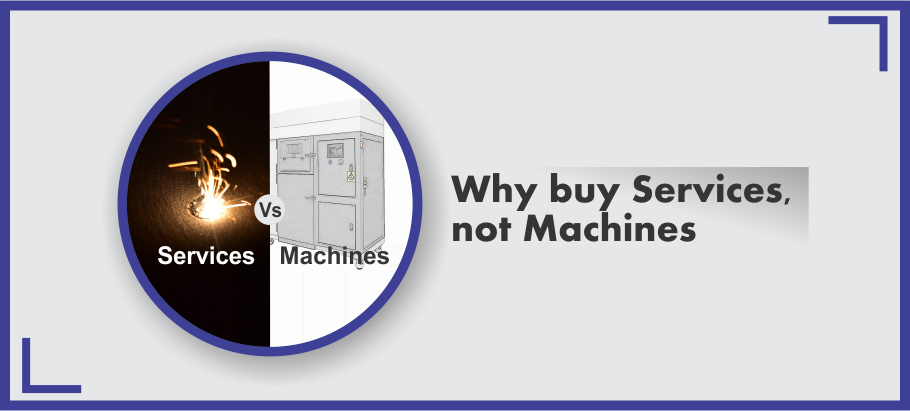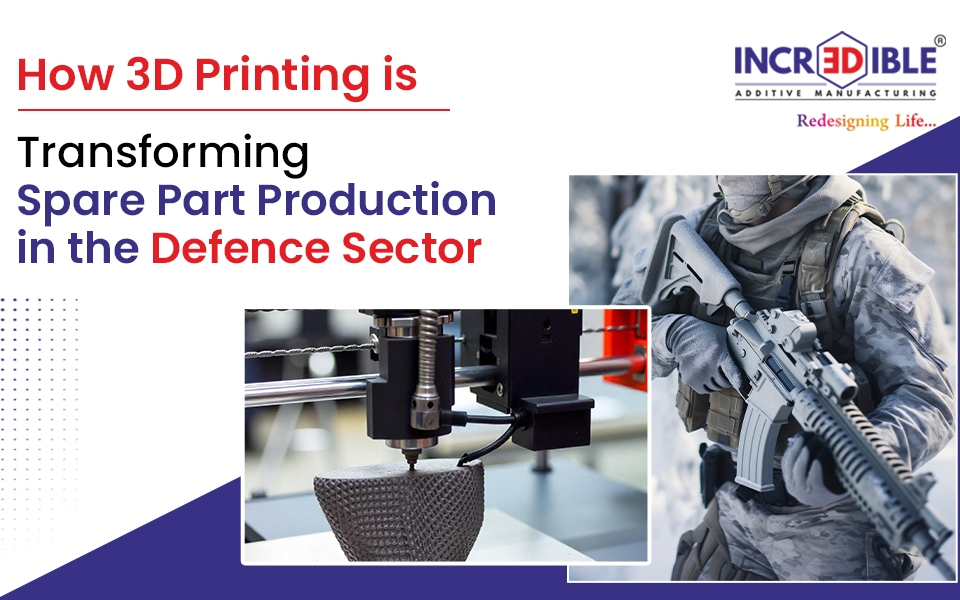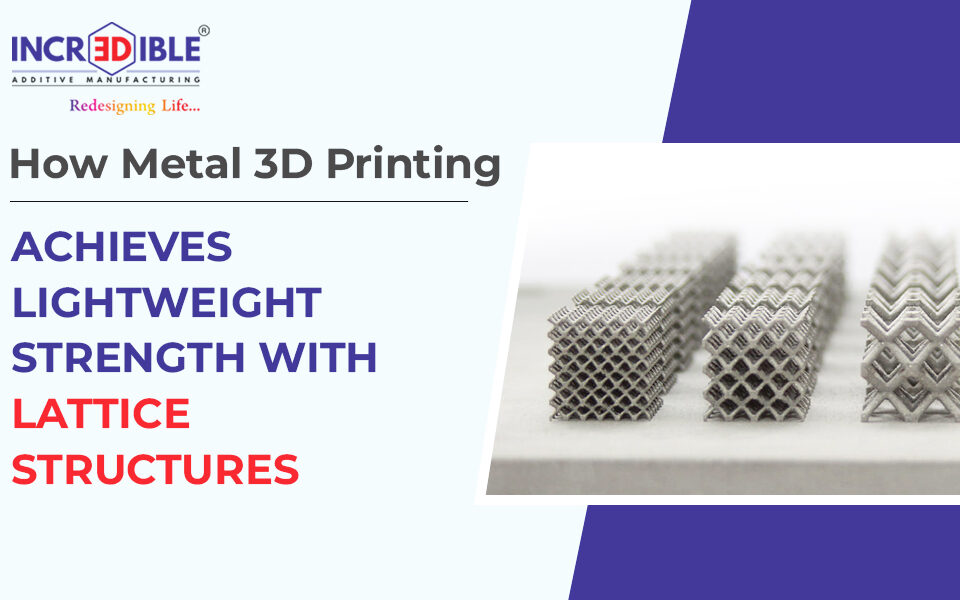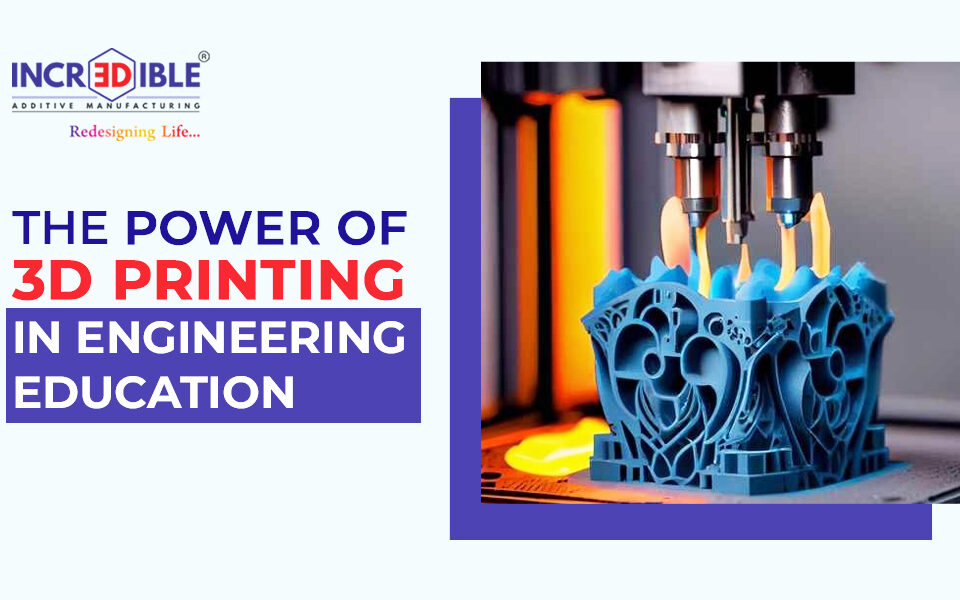3D Metal Printing – Why Buy Services, Not Machines
3D metal printing or additive manufacturing is a process of making three-dimensional solid objects from a digital file. It is gradually revolutionizing the way metal parts are being manufactured traditionally. This is a new technology which is rapidly improving, upgrading machines, changing process and reducing costs. Hence, it’s a risk you will carry when buying machines instead of taking solution provider services.
3D metal printing has a wide range of applications in various industries such as Aerospace, Defense Engineering, Automobile, and Medical and thus several companies are showing their interest in 3D metal printing businesses. However, there are many challenges involved in setting up a 3D printing establishment and buying a 3D printing machine.
So, is it viable to buy a 3D printing machine? Or is it rather better to go for 3D metal printing solution provider services? To gain some insight let us discuss some of the challenges that come along with buying a 3D printing machine.
Challenges involved in buying 3D printing machine:
-
High Investment Cost:
This is one of the biggest challenges that arise while buying a 3D printing machine. A metal printer investment requires a huge capital cost. Also, it requires an atmosphere controlled AM room for which you need a bulky & costly HVAC system. Along with this, you need software packages, raw material, post-processing equipment, all of which are quite expensive. Not to forget, the land and building are also one of the major investments in setting up the complete unit.
-
Interest Depreciation on Investment:
Your investment in machinery, software, and computers get depreciated at the highest rate as they tend to get obsolete due to rapid technology upgrades.
-
High Operating Cost:
Not just the machines need large investments; their operational costs are also high. The annual maintenance charges (AMC) add considerably to the annual cost. Spare parts of these machines are very expensive and take days to replace in case of breakdown. The powder used in metal 3D printing is very costly and the powder handling system is cumbersome. One has to even bear the high rejection cost. Also, we cannot neglect the running cost of the HVAC system, machinery, and plant.
-
Skill shortage:
3D printing is a relatively new industry and its applications are not fully developed in India. The number of organizations using 3D printing is still very less. To handle these machines, extensive training to employees is required and one has to bear the employee turnover rate as well. Due to a shortage of skill, machine servicing is also quite a big challenge.
-
Powder life, Investment & Disposal:
The metal powders used in 3D metal printing are imported and must be stored in an inert atmosphere and specific temperature throughout the year. Lack of care would reduce powder life and quality substantially. The material library is also limited. These powders are very expensive and a minimum stock of at least 100kg of powder is required to be maintained for running the plant efficiently. In addition to this, the waste powder needs to be disposed of for which you have to follow a costly disposal process.
-
Maintenance:
As the 3D printing machines are manufactured outside of India, there is a high dependency on machine manufacturers in case of any breakdown. Also, spares are not easily available in India so the machine maintenance is relatively time-consuming and expensive.
-
Rejection/ Batch failure costs:
Batch failures and rejections are a part of this technology. When a number of products are printed in a batch and gets rejected due to any kind of shortcoming, one has to bear the high failure cost.
-
Machine Utilization and ROI:
If the 3D printing machine is effectively utilized then only it proves cost-effective, else the manufacturing cost becomes multiple times higher than that of a service provider. Determining the ROI of 3D printer in your business and taking the right decision can drastically improve your profit margins and eliminate overhead costs.
-
Certification:
Metal 3D printing is widely used in Aerospace, Defense Engineering, and Medical industries. For producing any part in these industries, the company must have certain certifications. For example, AS9100D certification is mandatory for Aerospace and Defense part manufacturing and ISO 13485 is mandatory for patient-specific implant manufacturing. These certifications are very expensive and challenging to get as well as to maintain.
-
Lack of Awareness in India:
3D metal printing is still in its growing phase in India. It has yet not been completely integrated into the manufacturing sector at a larger scale. Professionals are still exploring 3D metal printing technology. Also, the parts which are being currently manufactured in India are not designed for Additive Manufacturing, so it will take years for this technology to fully flourish in India.
-
Expensive Process Validation:
Process validation can be defined as the collection and evaluation of data, right from the process design stage to production, which establishes scientific confirmation that a process is capable of consistently delivering quality products. Process parameter optimization is an expensive and time-consuming process in 3D printing. Variety of process parameters needs to be established for various materials for which testing & validation of samples are required. This is a time-consuming and costly affair and needs a high level of skill and experience, which is also not easily available in India.
-
Conventional technology still cheaper:
3D metal printing is not widely accepted yet due to cheaper conventional options available. Indian market is much cost prone so people do not readily accept quality over price. Also, when a large number of parts are to be produced, 3D printing takes a lot more time which eventually increases the cost of production. Thus, in such cases, traditional manufacturing processes turns out to be cheaper than 3D printing.
Conclusion:
So after evaluating all the challenges, what would you prefer, buying a machine or availing services from a solution provider? Check your investment cost and plant running cost to the cost of buying the parts from the service provider. Save a lot of time, efforts, and money by choosing the better option.




